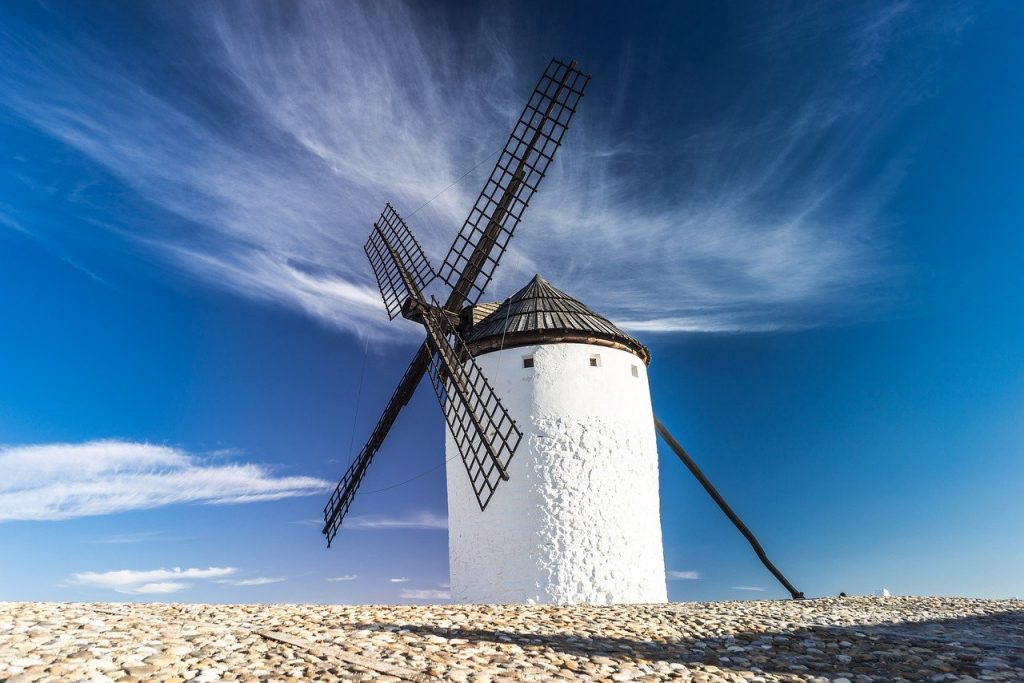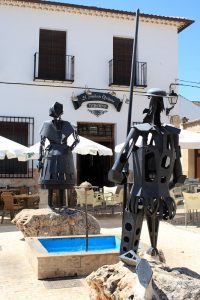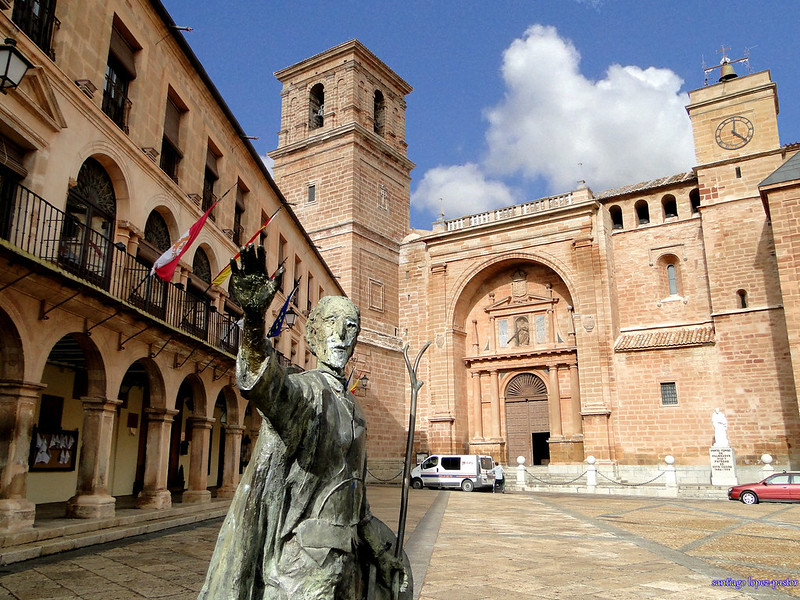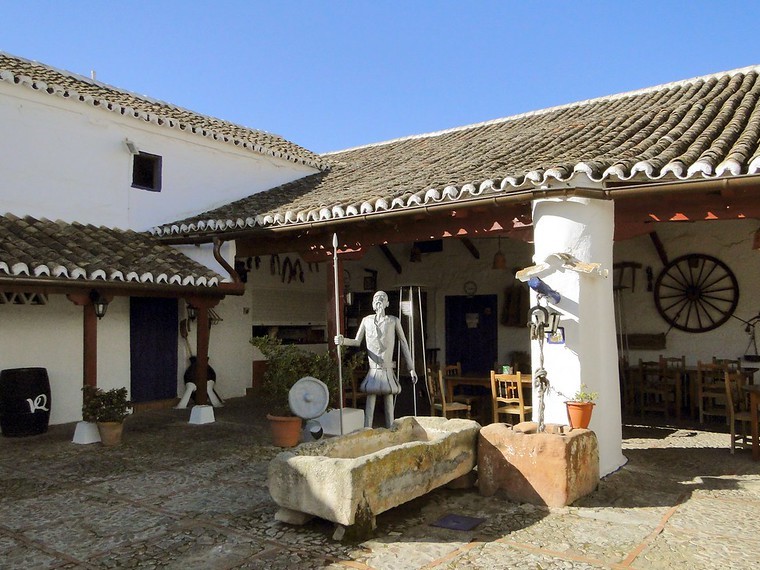It was not simply the mind of Don Quixote that wandered. In the novel, he set off to become a knight-errant and had many adventures. We follow in Don Quixote’s literary footsteps and explore parts of La Mancha.
The Ingenious Gentleman Don Quixote of La Mancha or just Don Quixote is a Spanish novel by Miguel de Cervantes. Originally published in two parts, in 1605 and 1615, it has been called “the first modern European novel.” Many authors consider it to be the one of the greatest novels ever written.
The plot revolves around the adventures of a noble from La Mancha named Alonso Quixano. He reads so many chivalric romances his mind becomes unclear. He decides to become a knight-errant, revive chivalry and serve his nation, under the name Don Quixote de la Mancha. His companion on these adventures is a farmer, Sancho Panza.
Ruta de Don Quijote
Seen alternatively as comedic, tragic and a social commentary, however you interpret it, there is no mistaking the would-be knight made a great trip through Castilla-La Mancha.
The European Council recognised the Ruta de Don Quijote and awarded it as a European Cultural Route. The 2,500km route takes in the main natural and cultural spaces of Castilla-La Mancha. It is a network of historic paths, actual creeks, trails, river banks and more, divided into ten sections spanning 148 municipalities of the five-Mancha Castilian provinces.
There are over 2,000 items of cultural interest and natural attraction. You could enjoy months exploring this rich and varied region of Spain; from Madrid and Toledo to Alcalá de Henares and beyond. However, we’ve selected a few that link closely with Cervantes and the novel.
Campo de Criptana

Campo de Criptana is the “land of giants”. Here you’ll find its famous windmills, which apparently are the ones that truly inspired Cervantes when writing Don Quixote’s adventures.
“Now look, your grace,” said Sancho, “What you see over there aren’t giants, but windmills, and what seems to be arms are just their sails, that go around in the wind and turn the millstone.”
“Obviously,” replied Don Quijote, “you don’t know much about adventures.”
El Toboso

This is where the Don found love, albeit somewhat mythical. “Dulcinea del Toboso is the fairest woman in the world, and I the most unfortunate knight on earth; it is not fitting that this truth should suffer by my feebleness.”
The Dulcinea House-Museum recreates a typical 16th-century house of the region. In Plaza Mayor there’s a monument El Toboso dedicated to Dulcinea and her admirer. Here’s also the Cervantes Museum which has numerous editions of his work in up to 70 different languages.
Argamasilla de Alba
It’s in Argamasilla de Alba, that we find Medrano’s house. The Medrano Cave, where Cervantes was held prisoner, is below the house. Legend has it he started to write the adventures of Don Quixote here.
Ossa de Montiel
Ossa de Montiel is a village close to two landscapes with special significance for Don Quixote: the magic cave of Montesinos where he descended through time and the ruins of the Castle of Rochafrida. You’ll find it in the Natural Park of Ruidera Lakes, with its undulating landscape and 15 lakes.
Villanueva de los Infantes

Villanueva de los Infantes is home to the house of Don Diego de Miranda, who according to tradition was the Knight of the Green Coat. His great deeds, Don Quixote mentioned often. This small town is full of beautiful architecture including the Convento de Santo Domingo, El Hospital de Santiago and Casa del Arco, among others. Many claim this is the home town of Don Quixote.
Puerto Lapice

Puerto Lapice is where Don Quixote became a knight. The inn, Venta del Quijote, Don Quixote mistook for a castle. The inn keeper helped Quixote fulfil his fantasy and become a knight. The restaurant has a small museum with illustrations of Don Quixote by artists from all around the world.
Alcázar de San Juan
The town of Alcázar de San Juan named Cervantes their favourite son. It is claimed he was baptised in the church of Santa María la Mayor. The windmills viewed from here, and the streets steeped in history, take your imagination on a journey back in time. The Hidalgo House Museum and Cervantes Visitor Centre are worth a visit.


